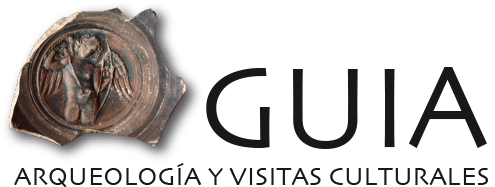Located at a crossroads and at the head of a fertile plain Antequera is in a privileged location. In the town and surrounding area there are many monuments dating from Prehistory to Baroqe.
Antequera
Although we can find Renaissance and Baroque churches and houses in all corners of the town, nearby is one of the most important dolmen groups in the world, which has been declared a World Heritage Site. Three Copper Age tombs are preserved here: the Menga, Viera and El Romeral, all of them tubular structures, but with two different forms of construction, known as the ‘Gallery’ and ‘Corridor’ types.
In Roman times there were two towns within a radius of just six kilometres: Singilia Barba and Antikaria, which now lies beneath the current town centre of Antequera.
The Roman Baths of Saint Mary are found on the eastern slope of the hill where the remarkable Renaissance church the Real Colegiata de Santa María la Mayor was built in the first half of the 16th Century using blocks from neighbouring Singilia Barba. The three naves are covered by a beautiful Mudejar coffered ceiling. At its southern limit are the foundations of the original church of Santa María, ignored in the later building.
In Antequera you find one of the most important dolmens of all known in the world and which have been declared a World Heritage Site.
There are numerous relics left from Muslim Antaqira. The most notable are those of the Alcazaba (citadel), whose main tower was called the Tower of Homage or Papabellotas.
Several Roman remains can be seen including the ‘Carnicería de los Moros’ which is really a nymphaeum or Roman monumental spring and the Villa Romana de la Estación, a grand building with several rooms paved in polychrome mosaics and wall inlays of opus sectile. Several, exceptional architectural pieces have appeared in the excavation such as columns or pilasters and sculptural fragments.
The Giants’ Arch, built in the Renaissance style in 1585 was a symbol for the city in reaffirming its Roman past, although for this purpose they gathered all the memorial stones and statues from surrounding towns. The Málaga Gate, from Almohad times, housed a chapel that modified its structure considerably. Its defenses were reinforced during the Nazarí period.
Antequera was conquered in 1410 by Fernando de Castilla, who then received the nickname ‘de Antequera’. The first years under Christian rule were difficult due to its situation at the frontier, and this did not change until the fall of the Nasrid Kingdom in 1492. From then on Antequera prospered thanks to its commercial activity. In addition to the previously mentioned Real Colegiata de Santa María la Mayor, parishes were established as well as numerous convents or street chapels, together with palaces, mostly in the Baroque and Mannerist style that provide great artistic interest.
In the Town Museum you can see relics from all these periods. It`s very remarkable the roman bronze statue called Ephebe of Antequera.
Very close to the city, we find two wonders of nature. The first, dominating the landscape of the Antequera plain is the “Peña de los Enamorados”, with its characteristic profile. But most impressive is the magical space of El Torcal de Antequera, accessible by various routes through its incredible landscape.




